Youth Climate Case
Air Date: Week of October 3, 2025
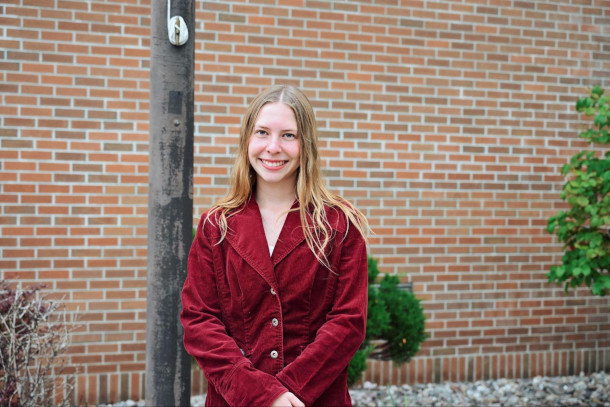
Eva Lighthiser is the lead plaintiff in Lighthiser v. Trump. She was previously involved in a different youth climate case, Held v. Montana. (Photo: Our Children’s Trust, Eillin Delapaz)
A preliminary hearing recently took place in federal court for the youth climate case Lighthiser v. Trump, in which plaintiffs are seeking immediate relief from three executive orders and subsequent actions of the Trump administration that boost fossil fuels. But the federal government maintains that the Lighthiser plaintiffs, like those in the prior case Juliana v. United States, lack standing. Environmental law veteran Pat Parenteau speaks with Host Aynsley O’Neill about the challenging legal basis for this lawsuit.
Transcript
DOERING: From PRX and the Jennifer and Ted Stanley Studios at the University of Massachusetts, Boston, this is Living on Earth. I’m Jenni Doering.
O’NEILL: And I’m Aynsley O’Neill.
Around the world, as governments fall far behind on the ambition needed to address the climate emergency, young people are turning to the courts for help in ensuring they have a future to look forward to. And in 2023, Held v. Montana became the first climate lawsuit in U.S. history to go to trial and secure a legal victory. Represented by Our Children’s Trust, the plaintiffs were able to successfully argue that the “right to a clean and healthful environment” enshrined in the Montana constitution meant the state had to fully consider climate impacts when permitting new oil and gas operations. But the U.S. constitution has no such mention of a clean and healthful environment. And thus, a different landmark climate case, Juliana v. United States, never overcame procedural tangles, with lengthy arguments over whether the plaintiffs even had the standing to sue their federal government over its decades-long practice of promoting fossil fuel development. So the plaintiffs in the new lawsuit Lighthiser v. Trump are trying a different tack. We turn now to Pat Parenteau, with five decades of experience in environmental law. For full disclosure he has financially contributed to Our Children’s Trust in the past. He’s here to give us his perspective on their new climate case. Pat, welcome back to Living on Earth!
PARENTEAU: Thanks, Aynsley, it's good to be with you.
O'NEILL: We just had two days of hearings out there in Montana. What happened during those two days? Who was giving this sort of testimony?
PARENTEAU: Yes, so our Children's Trust is representing, once again, a group of youth plaintiffs. I believe there's at least 22 of them. So the main focus of this two-day hearing before Judge Christensen in Montana Federal Court was the request of our Children's Trust for a preliminary injunction. Okay, so we're at the early stage of this lawsuit, and the idea of a preliminary injunction is to sort of hold everything in place until we can get to a trial on the merits. Meanwhile, the Trump administration is trying to throw the whole case out and not have any hearings at all. So that's kind of where we are at this point.
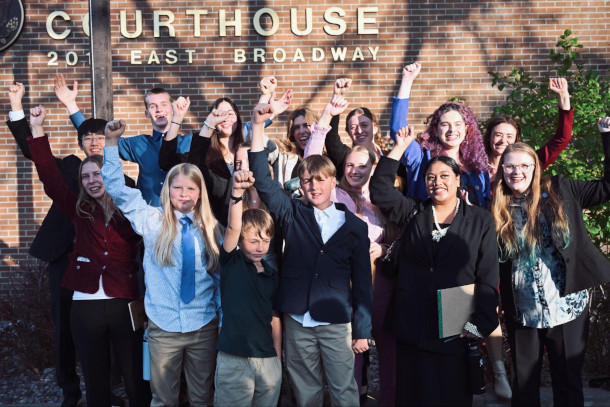
Youth plaintiffs outside the US District Court for Montana where the two-day hearing on Lighthiser v. Trump took place. Front row: Eva, Jasper, Nate, Jeff, Jorja, Miko, Delaney. Back row: Joseph, Isaiah, Charlotte, Georgi, Grace, Olivia, Taleah. (Photo: Our Children’s Trust, Eillin Delapaz)
O'NEILL: What are the three executive orders that were brought up in Lighthiser v. Trump, and what are the plaintiff's arguments against those?
PARENTEAU: So the three executive orders are number one “Unleashing American Energy,” which means prioritizing fossil fuel development over renewables. The second one is “National Energy Emergency,” which is basically triggering fast track procedures to build fossil fuel infrastructure. And the third is eevitalizing the coal industry by designating coal as a mineral on public lands, which opens up all kinds of fast track approval of leasing and oil and gas development. So those are the three executive orders. The attacks on these three orders are both constitutional. So the youth plaintiffs are saying, if you take all of these together and all the actions that are required to implement them, they are jeopardizing our life and our freedom under the Fifth Amendment to the United States Constitution. The other thing that the plaintiffs are arguing is that even if these orders aren't unconstitutional, they're illegal because they exceed the President's statutory authority. So those are the two primary arguments. One, the orders are unconstitutional. Two, they're illegal because they exceed the President's statutory authority.
O'NEILL: So after this first two days, what do we think is going to happen next? You know, we're so far away from a trial, Pat, so what do we have to do in between in order to even get close?
PARENTEAU: Yeah, so the idea of a preliminary injunction is to preserve what the courts call the status quo. In other words, stop everything while we get ready for trial. Judge Christensen expressed considerable doubt about his ability to do that, and he kept asking the plaintiffs lawyers, Julia Olson and others, what exactly are you asking me to do? And my concern as a judge is both, do I have the authority to do what you're asking, but also, as a practical matter, are you asking me to monitor everything the Trump administration is doing every day, because I can't do that. So, you know, I have to say it's very doubtful that Judge Christensen is going to order the kind of injunction that the plaintiffs would like to see him order.
O'NEILL: And Pat, to what extent is Judge Christensen able to say, "I can't let this full case move forward, but we need to whittle it down, let's choose one of these executive orders to focus on,” or something along those lines?
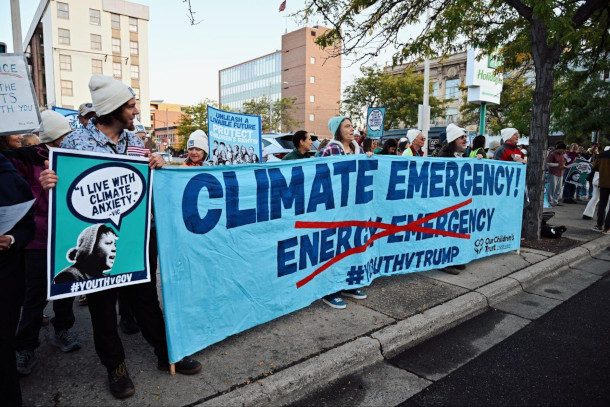
Supporters cheering on the plaintiffs in Lighthiser v. Trump as they walk into the courthouse during their hearing. (Photo: Our Children’s Trust, Eillin Delapaz)
PARENTEAU: Yeah, he may very well call the parties into an open public hearing and sometimes they do these things in camera, as they say in his chambers. I think he's probably going to try to narrow the case or at least convince the plaintiffs to narrow the case. If he denies an injunction, if he keeps the case alive, I'm saying, he may say I will entertain motions for injunctions aimed at specific actions. Let me give you an example. So the EPA just announced that sources of greenhouse gas emissions, industrial sources, no longer have to report their emissions. Now this has been a requirement of not only federal law, but international law. We were, I should say, parties to the Paris Agreement that requires reporting of greenhouse gasses and even the original, what's called a Framework Convention on Climate Change, all the way back to 1992 we are parties to that original framework treaty. In that treaty, we committed to reporting our greenhouse gas emissions to the world, to the US public, of course, but to the world more broadly. So here's the point, that's a really specific, discrete action that frankly, I think is illegal, telling the industry they don't have to report greenhouse gas emissions. So judge Christensen could say if you have something really specific like that and they're relying on one of these executive orders to do that, I would entertain a motion to stop that. I won't guarantee you I'll issue the order, but I would at least consider it. We may see something like that happen if he both denies the preliminary injunction but also denies the Trump administration's motion to throw the whole case out.
O'NEILL: And what do we know about how judge Christensen has treated maybe similar climate related cases in the past?
PARENTEAU: Yeah, he's a very reliable judge when it comes to environmental cases generally. In other words, he understands the threats to the environment and he will very much understand the threats from climate change. I don't think he's gonna, he's not, he's not a climate denier. He's not an ideologue at all. He's a very good judge, but he's also a judge, a district court judge that has to pay attention to what's happening above him, specifically the US Supreme Court. And we know from other conversations we've had that we do not have a sympathetic Supreme Court when it comes to environmental regulation, far from it. We have a court that seems to be outright hostile to federal regulation of climate related matters. So Judge Christensen is a smart enough judge to know he can't just do what maybe his instincts tell him he would like to do. He's got to do something that won't get overturned on appeal, that won't accomplish anything, and he's also got to be careful that he's within the bounds of what a federal district judge is actually authorized constitutionally to do. Judges don't set policy, people think they do, but they don't. They try to adhere to their job of applying the law to the facts of a case, a controversy before them, and issuing remedies that they have the power to enforce. And that's where things get tricky with a case like this, is can he actually enforce whatever order he issues? We've seen already, the Trump administration doesn't always respect the orders they're given from federal courts, certainly not from judges, they disagree with judges they think who are too liberal, for example. So judge Christensen has to think all the way through to the point of, if I issue this order and the government doesn't comply, then what do I do? Am I faced with having to hold the President or his officers in contempt, in criminal contempt perhaps. See, it gets more and more difficult the further you go with this.
O'NEILL: So Pat This is you know, yet another of these youth led plaintiff cases. What does that say to you about the morale and the center of the US environmental movement right now?
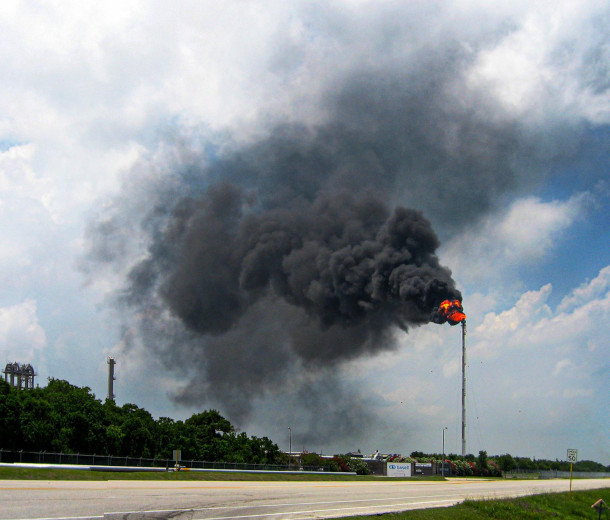
Pictured above is a gas flare from the Bayport Industrial District in Harris County, Texas, an area with a concentration of petrochemical companies. As part of a series of executive orders, the Trump administration declared a national energy emergency, supporting the domestic production of fossil fuels. (Photo: Jim Evans, Wikimedia Commons, CC BY SA 4.0)
PARENTEAU: Well, it's certainly true that the youth movement that's represented by the Lighthiser case, and frankly, all of the cases being brought by our Children's Trust, that the youth are not going to be discouraged or dissuaded, regardless of what happens at this particular juncture. You know, in the Lighthiser case. They're determined to push and demand really reform. Their futures are at stake. They don't really have any choice but to fight and to insist that their concerns be not only taken into account, but that, you know, the adults in charge of these programs and these governments do the right thing, do what they're supposed to do. And it really is all over the world. You know, we just saw the International Court of Justice, for example, issue a landmark, it's an advisory opinion, but it's an incredible legal document that finds that, yes, indeed, the nations of the world have an obligation to not only the youth of the world. It was brought by youth plaintiffs. The effort to get the International Court of Justice to take the case was pushed by young people. So that's an example of where in the larger context, young people all over the world are going to court, going to international tribunals, insisting that the threats to their future be taken seriously and that actions to correct that be taken now, when there's still time to do so, and they're bringing to bear not only just arguments, but facts and expert testimony. In the Lighthiser case, they had six expert witnesses across the board, economists, engineers. So the point is that I do see the energy coming from the young people bringing these cases.
O'NEILL: Pat Parenteau is an emeritus professor at Vermont Law and Graduate School. Pat as always, thank you so much for joining me today.
PARENTEAU: Well, thanks for having me on the program Aynsley, I appreciate it.
DOERING: You know, Aynsley, this case does face an uphill battle but as Pat said the youth are determined to try. And lead plaintiff Eva Lighthiser shared a few thoughts with us on what’s really motivating her to be a part of this tough fight.
LIGHTHISER: Growing up and seeing the effects of climate change firsthand has been really frightening to see. And I have had a lot of climate anxiety and worry about where we’re going. And knowing that there was a way, a route for me to take action, that could make change, it made it kind of feel like a no-brainer to me.
O’NEILL: And Jenni, Eva was also a plaintiff in the Held v. Montana case that eventually won in the state supreme court, but she must have been pretty young when that started, right?
DOERING: Yeah, the Held case was filed in early 2020 and so Eva Lighthiser has really come of age during the years she’s been involved in these youth climate cases. Now she’s a freshman in college and she says this time in court feels different, and not just because it’s a federal case.
LIGHTHISER: I entered that courtroom with a lot more confidence and a lot more excitement, I think, than the first time I entered the courtroom during the Held v. Montana case, because I’m a whole lot less scared of speaking up and using my voice now, which is nice.
O’NEILL: Well, sounds like Eva and the other kids in this case may need all the confidence they can muster to see this through.
DOERING: What, going up against the federal government itself and the fossil fuel industry to boot? And with an unprecedented legal argument? Pssht, should be a piece of cake.
O’NEILL: Or you could say child’s play. Now, looking at this from the defense side, in its motion to dismiss the case, the government maintains that like the Juliana case that was ultimately dismissed by the US Supreme Court, the plaintiffs in Lighthiser also lack standing. The motion reads, quote:
“Plaintiffs’ most recent complaint suffers from the same jurisdictional defects as those of Juliana. A self-designated group of children and young Plaintiffs claim they are better positioned to set national energy policy than the President of the United States. Those grievances are for the political branches, not the courts. Plaintiffs maintain they are injured by climate change, but they fail to show how their requested declaratory and equitable relief will redress those injuries. And in challenging dozens of discrete (and non-final) agency actions in one omnibus complaint, Plaintiffs transparently attempt to circumvent statutory judicial review provisions under the Administrative Procedure Act, the Clean Air Act, and numerous other statutes. The Court should again reject these efforts to forge a judicially constructed end-run around the democratic process and statutory review schemes.” End quote. And you can view Lighthiser v. Trump case filings from both parties on the Living on Earth website, loe.org.
Links
Read the Government’s Brief of the Motion to Dismiss
Read the brief in support of motion for preliminary injunction filed by Our Children’s Trust
Learn more about Pat Parenteau
Learn more about Lighthiser v. Trump from Our Children’s Trust
Watch A Verdict for the Planet: Legal and Political Reflections on the ICJ Climate Ruling
Living on Earth wants to hear from you!
Living on Earth
62 Calef Highway, Suite 212
Lee, NH 03861
Telephone: 617-287-4121
E-mail: comments@loe.org
Newsletter [Click here]
Donate to Living on Earth!
Living on Earth is an independent media program and relies entirely on contributions from listeners and institutions supporting public service. Please donate now to preserve an independent environmental voice.
NewsletterLiving on Earth offers a weekly delivery of the show's rundown to your mailbox. Sign up for our newsletter today!
 Sailors For The Sea: Be the change you want to sea.
Sailors For The Sea: Be the change you want to sea.
 The Grantham Foundation for the Protection of the Environment: Committed to protecting and improving the health of the global environment.
The Grantham Foundation for the Protection of the Environment: Committed to protecting and improving the health of the global environment.
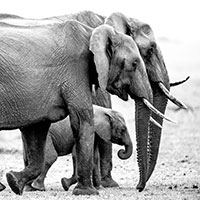 Contribute to Living on Earth and receive, as our gift to you, an archival print of one of Mark Seth Lender's extraordinary wildlife photographs. Follow the link to see Mark's current collection of photographs.
Contribute to Living on Earth and receive, as our gift to you, an archival print of one of Mark Seth Lender's extraordinary wildlife photographs. Follow the link to see Mark's current collection of photographs.
 Buy a signed copy of Mark Seth Lender's book Smeagull the Seagull & support Living on Earth
Buy a signed copy of Mark Seth Lender's book Smeagull the Seagull & support Living on Earth

